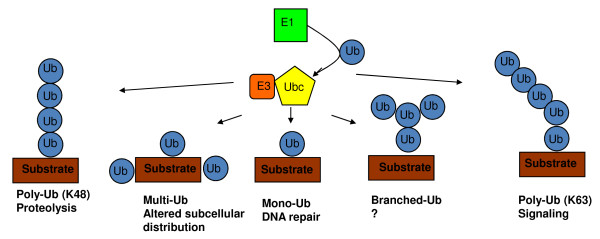Figure 1.
Different modes of ubiquitination lead to different substrate fates. The versatility of Ub in regulating different processes is derived from its ability to be conjugated as a monomer on one (monoubiquitination) or more substrate lysines (multiubiquitination) or as a polymer (polyubiquitination) by the sequential addition of further Ubs to each other through Ub lysines. Since Ub contains seven lysines, polyubiquitination can generate linear or branched chains with different topologies. Monoubiquitination can regulate DNA repair, viral budding and gene expression, while polyubiquitination through K48 of Ub generally results in proteasomal degradation, and K63-linked Ub chains can function in signaling and endocytosis.

